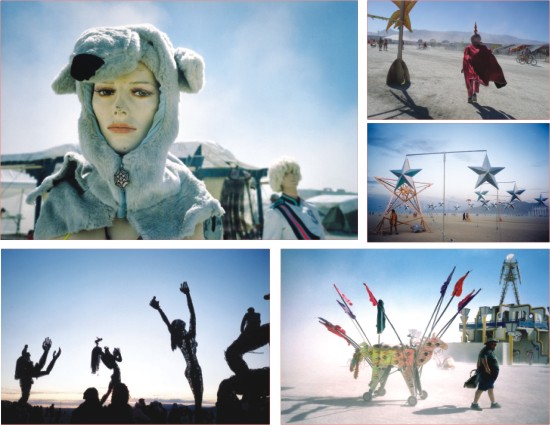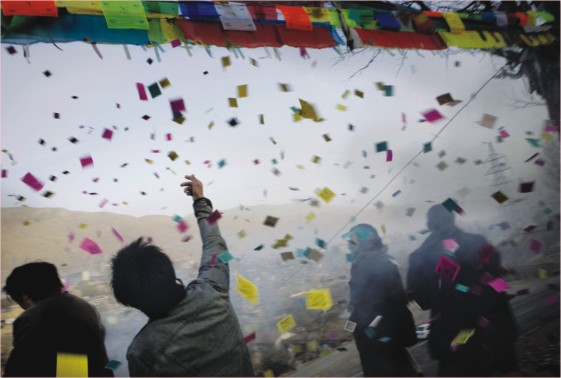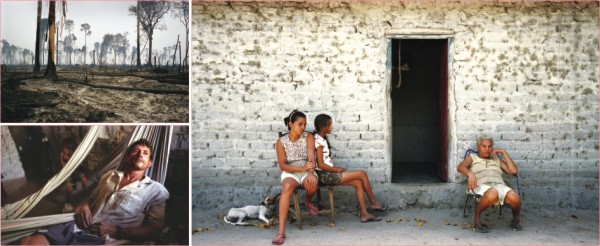
Inside
|
It is that time again, and this year the Chobi Mela has broken new ground in terms of innovation to bring an unbelievably rich and varied collection to our shores from every corner of the globe. The month-long festival, which opened in Dhaka last week, includes the very best of our domestic talent side by side with some of the most exciting, most inventive, and most reputed names from the rest of the world. In this issue of Forum, as in last month's, we once again feature seven of the exhibitions whose works will grace the Chobi Mela, to give our readers a taste of the richness and variety of the works that will be on display. We invite you to take a trip through the following pages and feast your eyes on these provocative and thought-provoking images from all over the world. Each image captures something essential, and we hope that the stories that they tell will remain with you for a long time to come. The featured exhibitions tell a story and shine a spot-light that illuminates our understanding, so that we can travel to far-flung locales and learn about the heart-breaks and hardships, the simple pleasures and struggles of different cultures and peoples everywhere in the world. All this has come to Dhaka -- the world and everything in it -- and we hope that our photo feature allows you all to take a small piece of the world home with you, to have and to hold, to seek inspiration from, and to see life in a new light. Chobi Mela is here again. Don't miss it.
Life is Elsewhere Photographer: Sohrab Hura
Everything turns problematic, questionable, subject of analysis and doubt: Progress and Revolution. Youth. Motherhood. Even Man. And also Poetry... Life is Elsewhere (Milan Kundera) It was in the summer of 1999 when my mother was diagnosed with an acute case of paranoid schizophrenia. I was 17 then. The doctors, in retrospect, had said that she had already started developing the symptoms many years prior to that. Symptoms that no one had noticed. But it was the break up with my father that caused her triggered her condition to suddenly surface and deteriorate. Over the years, the walls of our home started to peel off, people had stopped coming to our home because my mother was too scared to let anybody in and all that remained were the traces of a life that no longer existed. The initial years were spent hiding from the world. She, out of paranoia, and I, out of embarrassment and anger at who she had become. But after all these years I've realized that my mother had never stopped loving me. Today, as I look back, I realize that who I am, what I feel, see and think, is connected to my relationship with my mother in a way stronger than I know. And in this work, I hope I am able to connect the relationship that I've had with my mother with the rest of my life.
Krazy Kumba Mela
Freedom takes on many forms. Imagine a desert with nothing but sand. Imagine 50,000 people who come from all over the world to celebrate their freedom, to be whoever they want to be for one week. Here, there is no exchange of money, so you bring in everything that you will need. There is a “gift economy”, so you bring something that you want to share. It is an exercise in self-reliance you take home all your waste at the end. It's an exercise in collective survival. You have to be equipped for dust storms and heavy rains. The rest is all fun. There is music 24-hours a day, amazing art installations, creative and thought-provoking performances, crazy costumes, streets set up like a real city, art cars that double for concerts, gorgeous sunsets and exquisite sunrises, and a coming together of new and old friends. The Burning Man festival is a modern kumba mela. At the heart of it all, it is about having the freedom to be yourself and respecting the freedom of others.
Location: California Dreamin' MetaSaoPaulo Photographer: Carlos Cazalis
Freedom can be seen as a state of living in disaffection with a thing, a subject or in a particularly undesirable situation. Depending on the individual's concept of reality, this can be either a physical or mental state. In São Paulo, once considered Brazil's most modern of metropolis, those who left the northeast or foreigners who are attached culturally or religiously to their first sources of land often become homeless in this enormous urban landscape. A wrong life cannot be lived rightly even if you are free. In the traditional bourgeois neighbourhoods as well as in the slums of the city, there is no freedom. In the former, hypocrisy towards oppression can no longer be concealed, so escape through wealth is unreasonable. In the latter, the illusion of freedom, due to lawlessness, will no longer be sustainable.
Tibetan Unrest On March 10, 2008, a series of demonstrations began in Lhasa to mark the 49th anniversary of an unsuccessful Tibetan uprising against Chinese rule in 1959. The protests began peacefully but escalated into Tibet's most violent unrest in nearly two decades. Police battled against angry Tibetan protestors, vehicles were overturned, shops set on fire and ethnic Chinese attacked and killed. The Chinese authorities cracked down by using detentions and brutal force, which triggered yet more protests. With the help of modern technology, such as the Internet and mobile phones, the protests rapidly spread to other Tibetan areas in the Chinese provinces of Gansu, Sichuan and Qinghai. With less than half a year to the Beijing Olympics, the Chinese government was eager to keep everything under control -- and out of sight from the rest of world. Martial law was promptly imposed in all Tibetan areas with checkpoints, surveillance and a massive presence of police and PLA (People's Liberation Army). All reporters and foreigners were denied access. On assignment for Newsweek, I managed to get into the town of Tongren in the Gansu Province and its Tibetan monastery. These images are all from there.
“It-sà-rá” = FREEDOM
This is the first part of a long-term project called 'Human Negotiations', currently being photographed in three Asian countries. As an outsider, I am interested in getting a glimpse into the lives of young women who, by their own will, have chosen prostitution as a means of living. While the path that leads them to prostitution may differ, they all do share some common ground. One admits that it is easier to make some “quick” money than it is to work in a factory. Others say it is “cool to be able to hang out in the bars and see men that I'd never meet if I stayed at home.” Another said, “I will always come back here… even though I am supported by a foreign boyfriend, most people around me understand where I am from. It is a community.” About 70 percent of Thai women have worked in prostitution. * None of the girls photographed has been forced into the profession, nor does any of them work in an illegal environment.
Prisoners of Hope: Modern-day Slavery in Brazil
Even though 2007 was the 200th anniversary of a fundamental landmark in the abolition of slavery (the slave trade was banned by the British parliament in 1807), slavery has never been as intensively practicised as it is in present times. The International Labour Organisation (ILO) estimates that there are currently at least 25,000 slaves in Brazil. Even though the efforts made in Brazil to eradicate it have been praised by the ILO in 2005, there is still a long way to go to effectively rid the country of this plague. Slavery in Brazil is now no longer directly associated with the colour of a person's skin as it was during the colonial times, but to poverty and lack of opportunities. It is done via imposing fraudulent debt, used as an excuse to keep workers in the farm because they "owe" money to the farmer. They are forced to buy everything, from tools to food, from the farmer's shop at inflated prices. The debt is never cleared and the workers are trapped. Intimidation and violence are commonplace. The distance between these remote farms and the nearest human settlement also works as a real barrier against free movement. When the Ministry of Labour's inspectors and the Federal Police raid such farms, the workers are freed and the farmers are forced to pay their wages. But those powerful farmers often get away with it, while thousands of destitute workers are being deprived of their basic rights. Their families never know their whereabouts as they are locked in cycles of debt-bondage and misery. My work documents this problem in Brazil right now, mainly in the Amazon and its agricultural frontier. I chose this theme for Chobi Mela V because one way to represent a subject is via its antithesis, and slavery is the worse possible annihilation of freedom.
The Eye of the Beholder…
“A tree that can fill the span
This body of work is a series of images produced in Patna, India, in 2006. The subject matter is inspired by my own spiritual journey and interest towards the Buddhist way of life, in which mental freedom is something very important in its philosophy, and how it can have quite a dramatic effect on one's life. As an Islander, a woman, and an artist, I have strived to take my first steps in achieving a series of images that evoke the spirit of the philosophy. It is also a way of discovering a country by capturing experiences on how the country lives and breathes the contemporary stories, tales and legends of Buddhist philosophy. |
 Photo Feature
Photo Feature













